by Emily E. Hogstad, Interlude
Today we’re looking at twenty facts about classical music that will give you an overview of what classical music is, its extensive history, its most famous practitioners, and more.

© Musicnotes, Inc.
Let’s get started:
1. It’s really hard to define classical music – so much so that sometimes it’s defined by what it’s not.
Wikipedia defines classical music as “generally [referring] to the art music of the Western world, considered to be distinct from Western folk music or popular music traditions.”
That said, although classical music is separate from folk music or pop music, it has often been influenced by both of those traditions.
2. Classical music has existed in one form or another for over a thousand years.
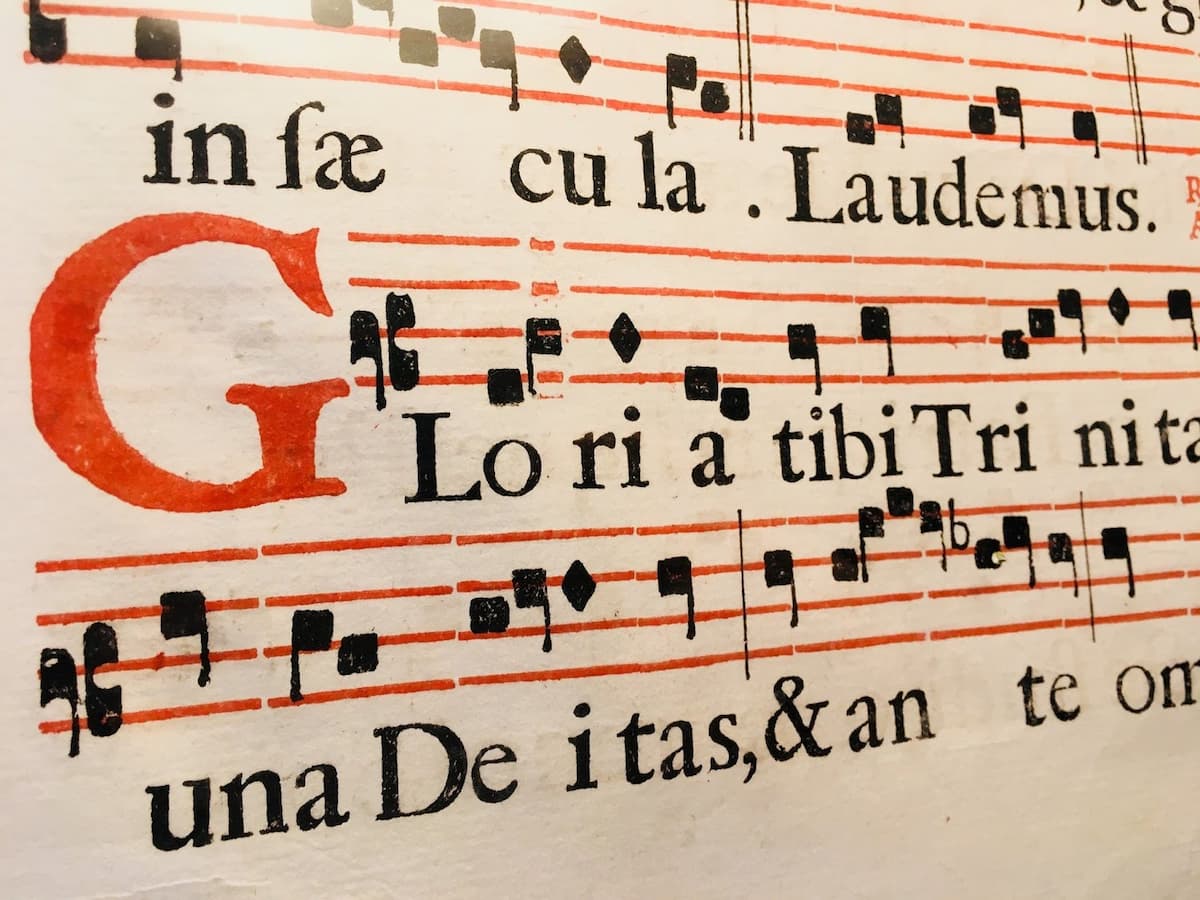
Gregorian chant
One reason why it’s so hard to define classical music with precision? The phrase can mean anything from Gregorian chants from a thousand years ago to elegant string quartets from the 1700s to spiky percussion solos from the present day.
The good news is that such an extraordinary range means that most people can find something within the genre that they really enjoy listening to.
3. There are dozens of groupings of classical musicians.
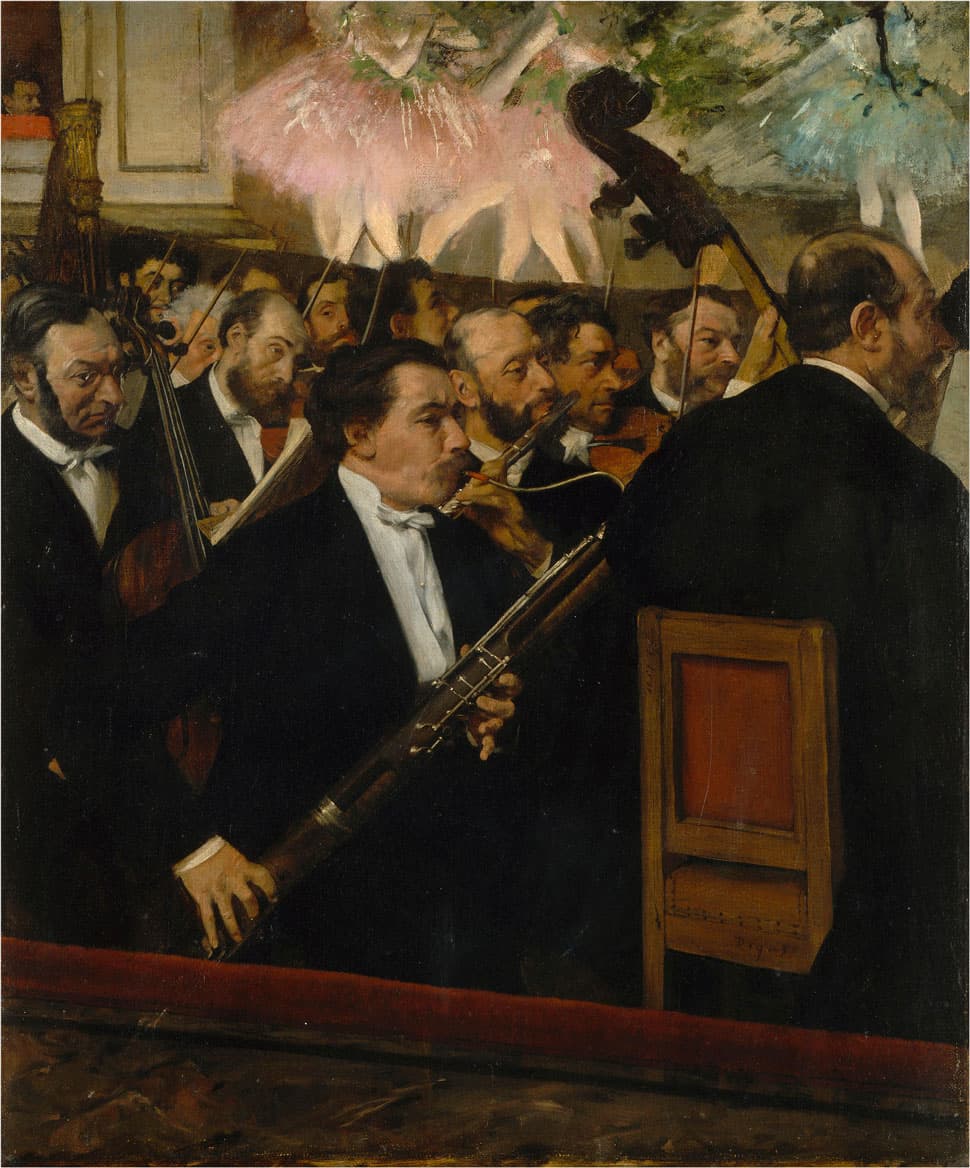
Edgar Degas: The Orchestra at the Opera
There are dozens of combinations of classical musicians, but here are some of the most popular:
- Symphony orchestra: a group of between fifty to a hundred musicians including violins, violas, cellos, basses, clarinets, flutes, oboes, French horns, trumpets, trombones, and a full percussion section
- Chamber orchestra: a smaller group of around fifteen to fifty musicians including most of the instruments above
- String quartet: two violins, a viola, and a cello
- Piano trio: one piano, one violin, one cello
- Piano quartet: one piano, one violin, one viola, one cello (usually)
4. Classical music grew out of church music.
The Christian church was an extremely powerful force in Europe for centuries.
To express its wealth and political and social power, as well as to increase the impact of worship services, the church hired musicians to compose and perform music.
In this way, the church provided countless creative and economic opportunities for musicians and artists.
5. There are at least six main eras in classical music history. (Some scholars believe there are more.)
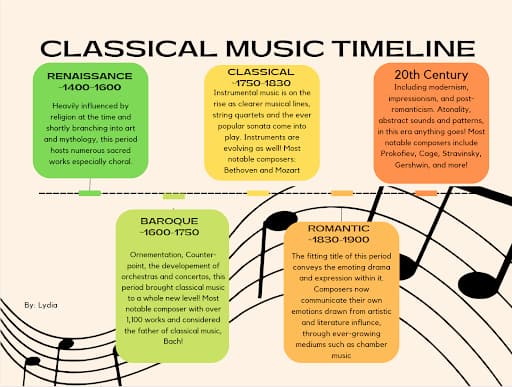
© pixeljournal.org
Here’s a quick summary of the six best-known eras in classical music history. The dates are approximate.
a. The years from before 1400 are known as the Medieval era in music. The medieval era includes Gregorian chants and music and, thanks to newly standardized notation, music with increasingly complicated intertwining lines and rhythms. Famous composers from this era include Hildegard of Bingen, Machaut, and Pérotin.
b. The years between 1400 and 1600 are known as the Renaissance era in music. The Renaissance era includes madrigals, chansons, and motets, among other forms. Compositional rules hardened during this era, and religious and secular music began influencing each other. Famous composers from this era include Ockeghem and Palestrina.
c. The years between 1600 and 1750 are known as the Baroque era in music. This was the era in which many types of music developed into forms that are recognizable to modern-day musicians, such as sonatas, concertos, operas, and cantatas. Famous composers from this era include Monteverdi, Bach, Handel, Vivaldi, and Telemann.
d. The years between 1750 and 1820 are known as the Classical era in music history. Composers during this era subscribed to Enlightenment ideals and valued elegance, clarity, balance, and naturalness. However, instrument technology advances also made wider spectrums of volume possible, which also led to a subgenre known as the Sturm und Drang (Storm and Stress) style to develop. Famous composers from this era include Mozart, Haydn, Schubert, and Beethoven.
e. The years between 1820 and 1910 are known as the Romantic era in music. Composers in this era loved to explore drama, instrumental color, natural inspirations, nationalism, and emotional extremes. Famous composers from this era include Liszt, Tchaikovsky, Strauss, Schumann, Berlioz, Dvořák, Wagner, Mahler, Sibelius, and many others.
f. The years between 1910 until around mid-century are known as the Modern era. (Sometimes another era is recognized as postmodernism, but people disagree as to how to classify twentieth century music.) Modern music is known for its individualism and experimentation. Famous composers from the twentieth century include Prokofiev, Stravinsky, Shostakovich, Gershwin, Bernstein, Barber, Ives, Messiaen, and others.
6. The recipes for various types of classical music developed during the Baroque era.
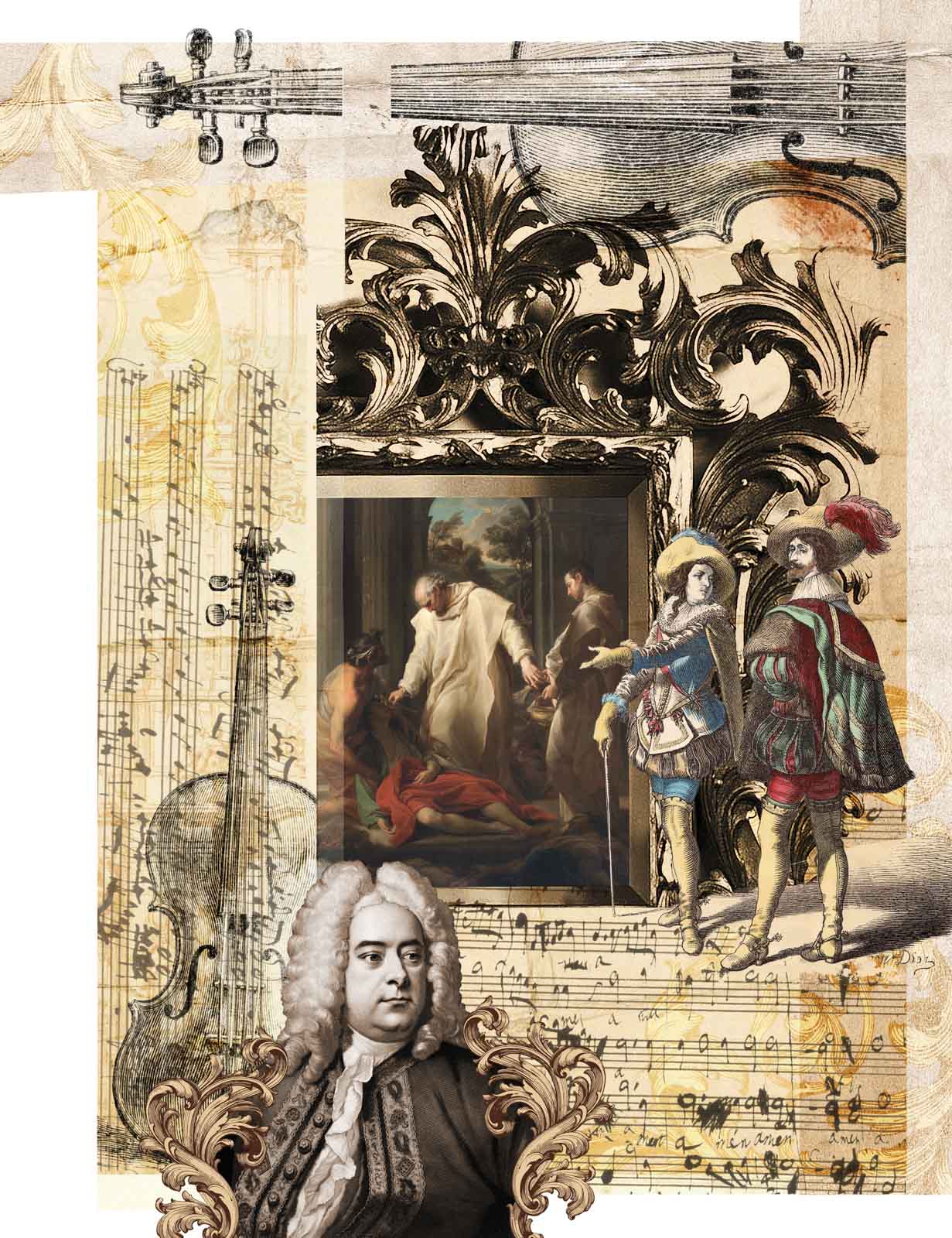
Collage of music and arts in the Baroque period by Stephen Louis © Cathay Pacific
Classical music is full of different types of music that follow a specific structure, many of which became standardized during the Baroque era.
For instance, during the Baroque era, a concerto gained specific traits. A concerto is now understood to be…
- a work for a solo instrument or instruments.
- split into three parts, called movements.
- made of different musical material in each movement.
- three movements long, with the first faster, the second slower, and the final faster again.
To this day, many concertos follow this same basic recipe.
7. The word opus and a number refers to the order in which a composer’s work was published.
We wrote an article about “How music is catalogued”
An excerpt:
To help identify and organise pieces of music by a particular composer, individual compositions or sets of works are usually given an “Opus” number. The word “opus” is Latin and means “work” or “work of art”, often abbreviated as “Op.”, or “Opp.” in the plural. The practice of assigning an “opus number” to a work or set of works when the work or set was published began in the seventeenth century. Opus numbers were not usually used in chronological order and did not necessarily denote when a work was actually composed. Unpublished works often were left without opus numbers.
8. People who play classical music are almost always taught by individual teachers, as opposed to self-taught.
In the classical music world, instrumental technique – which has been refined over hundreds of years – is very important.
Without careful oversight by a teacher, it is easy to injure yourself while playing music…or just not be able to make progress past a certain point.
In other musical traditions, the passing along of knowledge is often less formalised and more organic.
9. Classical musicians used to improvise much more than they do now.
Wolfgang Amadeus Mozart and Ludwig van Beethoven were not just famous composers; they were famous improvisers, too.
However, as instrumental technique advanced and became increasingly demanding to learn, and as musicians were encouraged to choose a specialty between composing and performing soloist, their comfort levels with improvisation dropped.
By the middle of the twentieth century, the tradition of improvisation in classical music had largely died out.
However, there have been efforts to revive it in the modern day.
10. Classical composers have often taken inspiration from folk music.
Nationalism was very important to classical composers and musicians, especially in the nineteenth century after the French Revolution, the rise of Napoleon, and the political turbulence that happened afterwards.
Especially in occupied countries, composers from classical music history used folk music to provide colour to their music.
Jean Sibelius wrote Finnish folk music into his compositions. Franz Liszt was inspired by the music of Hungary. Antonín Dvořák was inspired by Czech and Bohemian influences. There were many other similar examples.
11. Wolfgang Amadeus Mozart was one of the most astonishing child prodigies of all time.
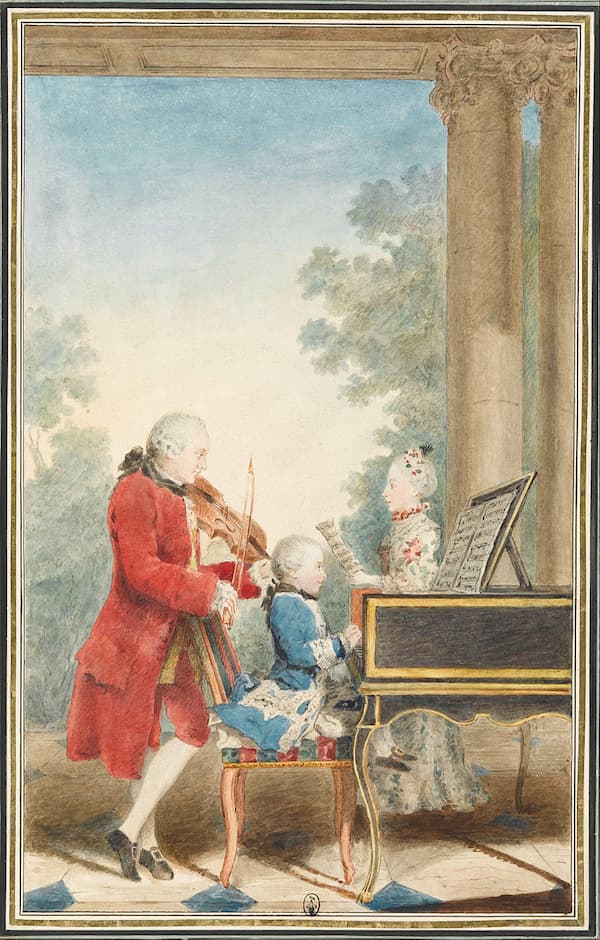
Louis Carrogis Carmontelle: Mozart family on tour: Leopold, Wolfgang, Nannerl, ca 1763
Wolfgang Amadeus Mozart was born to a professional musician and his wife in 1756.
He had an older sister named Maria Anna Mozart who was also a child prodigy, and as a toddler he watched her lessons. Soon, inspired by his older sister, he began learning instruments himself.
By five, Wolfgang was composing keyboard music. By eight, he’d written his first symphony.
In 1762, the Mozart family went on the road to showcase their precocious children and make money, and the rest is history!
12. Ludwig van Beethoven lost his hearing but still kept composing.

Joseph Willibrord Mähler: Beethoven, 1804–1905 (Gesellschaft der Musikfreunde in Wien)
Ludwig van Beethoven first realised he had hearing issues in the 1790s, when he was in his mid-twenties.
The following years were torturous for him healthwise. He didn’t just go deaf; first, he dealt with long periods of tinnitus.
Between the tinnitus and his fear of what such a disability would mean for his ability to support himself, he entertained ideas of suicide.
By his mid-forties, he was completely deaf and could only communicate with friends and family by writing out his conversations. However, he could still hear things in his mind, and he continued composing.
13. Violinist Niccolò Paganini and pianist Franz Liszt set new standards of virtuosity.
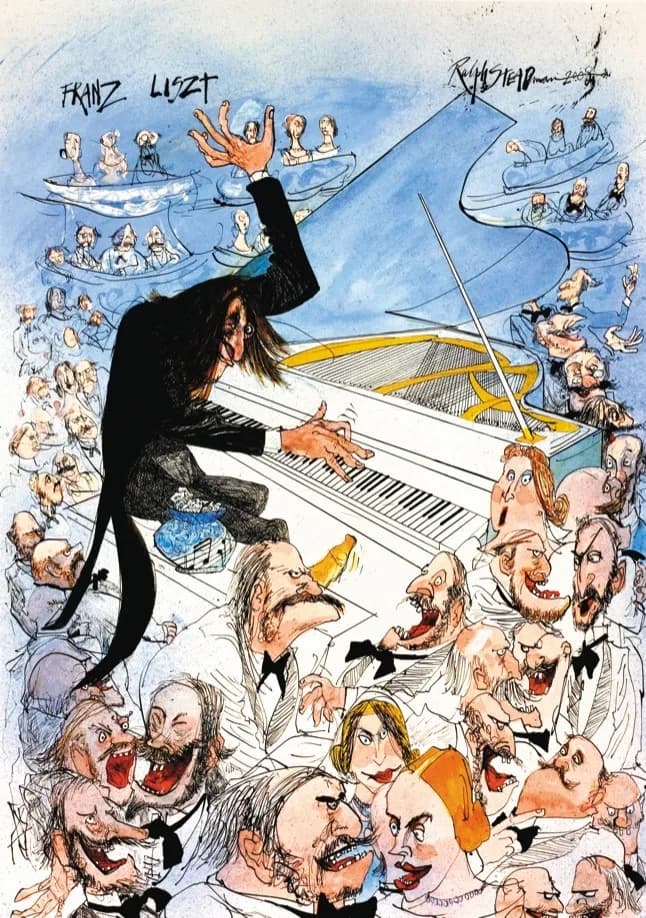
Liszt concert by Ralph Steadman
Violinist Niccolò Paganini (born in 1782) and pianist Franz Liszt (born in 1811) each set new standards for virtuosity on their respective instruments and helped to kickstart a new era of technically dazzling performances.
It is believed nowadays that Paganini may have had a health issue like Marfan’s Syndrome or Ehlers-Danlos Syndrome. His joints were extra flexible, which opened new doors for instrumental technique. He was also very pale, gaunt, and cadaver-like. Rumours spread about his apparently supernatural abilities, and rumours flew that he’d made a deal with the devil.
Franz Liszt also made a splash with his audiences, so much so that a medical term was created for the specific hysteria that his presence unleashed: Lisztomania. His fans went so far as to save the butts of his cigarettes.
These two figures were some of the first instrument-playing idols. Their fame helped to create the archetypes of the twentieth-century rock ‘n’ roll lifestyle.
14. Romantic era composer Robert Schumann fell in love with great pianist Clara Wieck. They got married…after protests from her father.
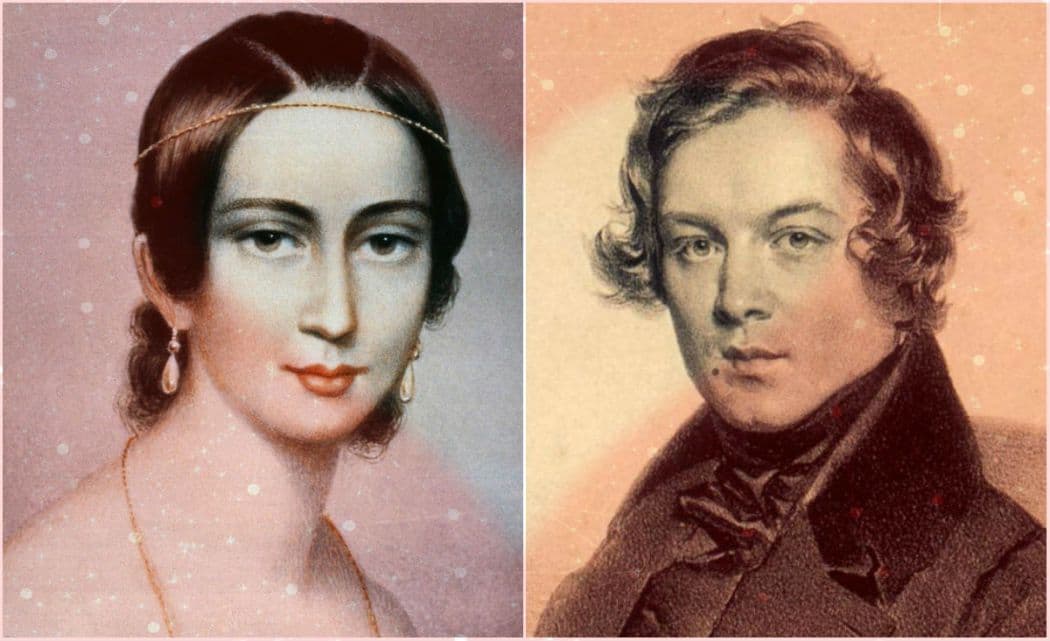
Robert and Clara Schumann
Many people vaguely remember the name Robert Schumann from their music education classes. They may also remember that his wife’s father tried to keep him and his wife from getting married and that the whole family went to court to resolve the issues.
However, it’s not often explained how Clara Wieck Schumann was one of the greatest pianists of the century. She had a decades-long career and made sure that her husband’s work entered the canon.
15. Composer Richard Wagner took opera to an extreme with his Ring Cycle.

Richard Wagner, 1876
Composer Richard Wagner embraced the idea of the “Gesamtkunstwerk”, or “total work of art.”
In such a work, music, visuals, and script would all work together in harmony.
Wagner’s crowning achievement was a set of four massive operas, known collectively as The Ring Cycle. When the operas that make up the Ring Cycle are played one after another, they last for fifteen hours: the equivalent of two seasons of a one-writer prestige TV show.
16. Composer Gustav Mahler wrote symphonies on a mammoth scale.
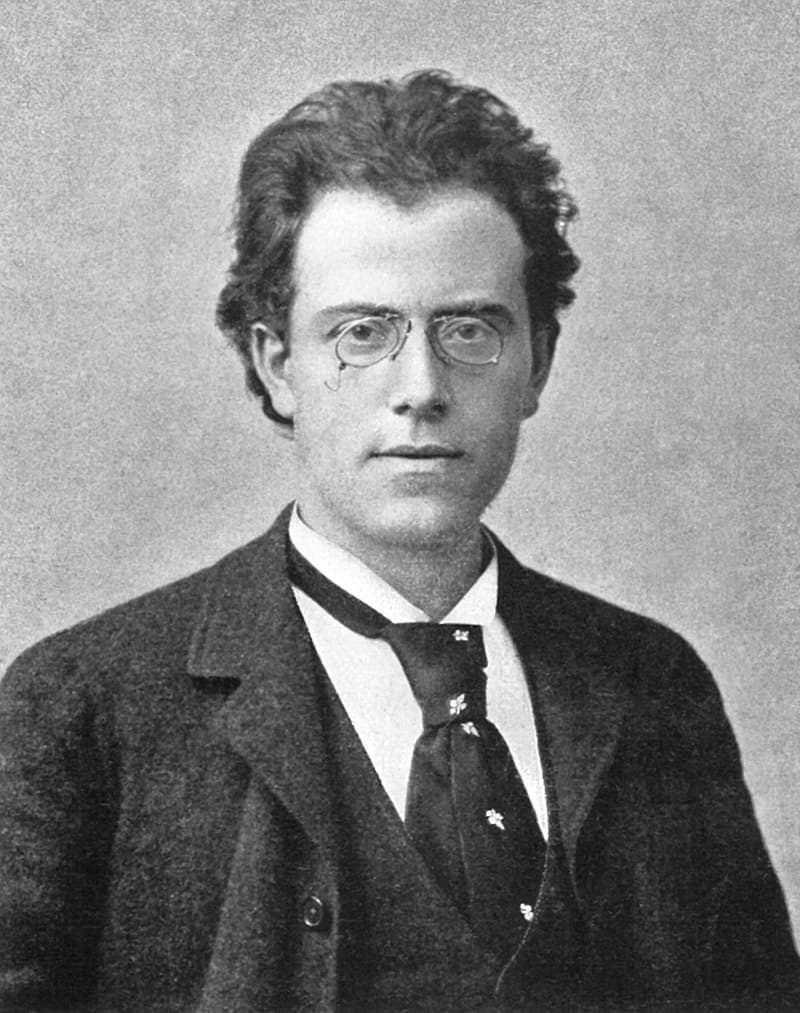
Gustav Mahler, 1892
Gustav Mahler’s third symphony lasts for ninety minutes.
His eighth symphony is written for up to a thousand performers, including multiple choirs. Hence its nickname, Symphony of a Thousand.
17. Classical music has been famously used in cartoons.
We’ve written a variety of articles about the use of classical music in cartoons. In this one, we looked at how the animators incorporated classical music into Bugs Bunny cartoons.
In the classical music realm, nothing tops Warner Bros.’ take on Wagner in What’s Opera, Doc? This 1957 cartoon used music from all 4 of the Ring operas, Tannhäuser, Rienzi, and The Flying Dutchman to create the immortal story of Elmer Fudd hunting, as usual, Bugs Bunny.
18. Classical music probably doesn’t make your kids smarter.
In 1993 a famous study was published in Nature, claiming that college-aged subjects in experiments improved their performance on spatial tasks after listening to classical music. This helped lead to a cultural conversation about “the Mozart effect.”
Later experiments tried to replicate the results with children, but were unsuccessful.
19. Classical music can help you relax.

© health.clevelandclinic.org
If you can find classical music that keeps a steady volume and beat, has pleasant harmonies, and features no lyrics, that music might lower the stress hormone cortisol and lower your blood pressure, according to studies.
20. Composers are still writing new music in the classical music tradition today.
Classical composers are still active today! Many are women and people of colour, defying the preconceived notion that a composer has to be a dead white man.
Here are a few modern composers to check out:
- Caroline Shaw
- Jessie Montgomery
- Max Richter
- Missy Mazzoli
- Wynton Marsalis
There are so many more, too! Remember, classical music isn’t only written by dead white guys in powdered wigs.
We hope you’ve enjoyed these classical music facts! The genre is massive and features a wide variety of types of music. Chances are you’ll eventually find something you’ll love listening to!
No comments:
Post a Comment